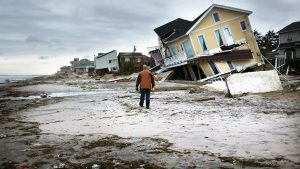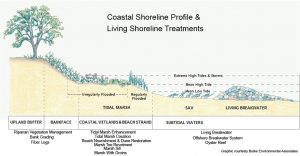20:00, October 29, 2012: The eighteenth named storm of the year, Hurricane Sandy made landfall on the coastline of southern New Jersey. This shift left Long Island and the New York metropolitan area directly in the path of the stronger, eastern side of the Category 2, counterclockwise-rotating, low pressure system. Storm tide levels were observed as high as 14.58 feet MLLW (NOAA 2012), higher than any surge seen in area in recorded history. These extreme heights left Manhattan streets fully consumed, residential New York areas underwater, and coastal infrastructure decimated. When the sky cleared, the “Superstorm” left $32 Billion worth of damage to the tristate area in its wake, an unprecedented amount that caught NY residents and government officials alike by surprise.
With the looming threat of rising sea levels and the increasing power and frequency of super storms, local, state and federal agencies have been working tirelessly to not only improve coastal fortification and resiliency, but to create a more eco-friendly solution to prepare for future natural disasters.
Just recently, New York State DEC released a new guidance document which not only promotes and expands on the protection of our New York Coastlines, but encourages an eco-friendly approach to coastal resiliency toward achieving shoreline risk reduction. The 35 page document, titled “Tidal Wetlands Guidance Document: Living Shoreline Techniques in the Marine District of New York State,” explains the pressing importance of coastal fortification and erosion prevention, and also provides applicable examples of natural and nature-based solution in a number of different marine settings.
Sensible means of coastal fortification and measure to prevent coastal damage are essential to protect our New York Coastal communities, ranging from nature-based living shorelines, constructed rip-rap jetties and groins, or somewhere in between. The team at Walden Environmental Engineering is well versed in coastal engineering, marine engineering and construction, marine biology, and estuarine ecology. If you’re interested in consulting on any matters coastal and marine, please contact us at (516) 624-7200.


